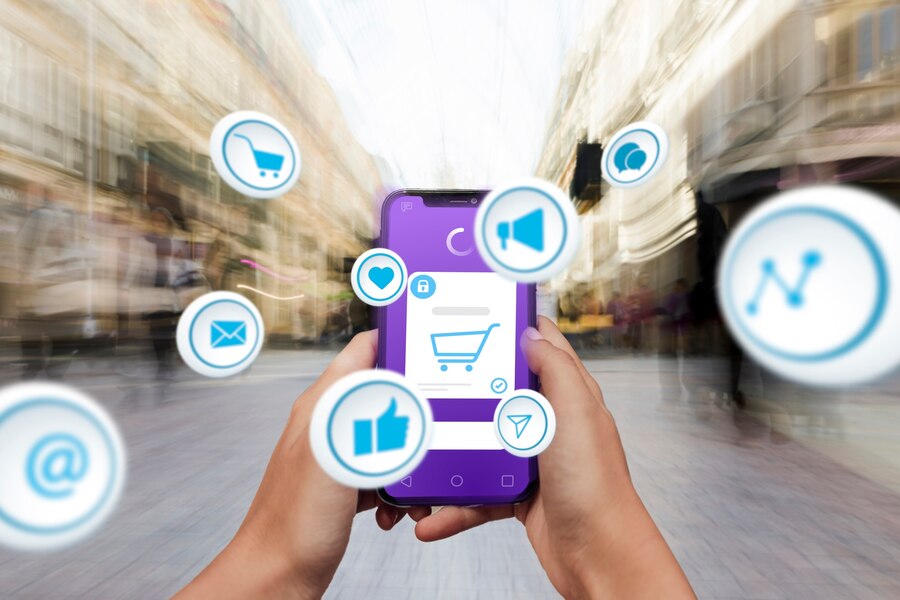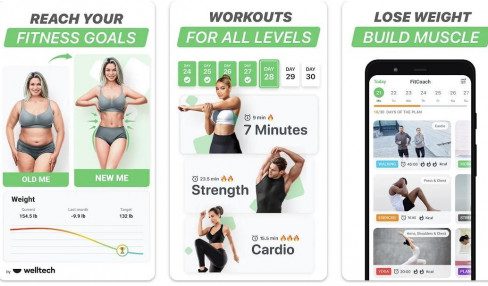Custom Vs. “Box” For E-Commerce App: A Comparison, Calculating The Lost Profit
6 Mins Read
Published on: 24 January 2023
Last Updated on: 09 September 2024

toc impalement
In the context of mobile devices’ popularity, it becomes a “good tone” for an e-commerce company or retailer to have an e-commerce app for mobile.
Choosing a variant acceptable for themselves, companies follow one of two ways: they buy a “boxed solution” or order a custom mobile app design and development “for themselves”, the so-called custom one. As practice shows, both options have the right to life, but each has its own peculiarities.
Custom app design and development are fundamentally different in approach. In this case, the app was created from scratch for the needs of a specific company and its customers. It’s always a team that’s customized for a specific project.
Boxes are good for their simplicity, but both of them are poorly adapted for the specific needs of the business. Every glitch or error is going to resolve alone. Tech support is available in extended versions with an extended pricing plan, but it doesn’t solve a company’s custom needs.
Custom App Design And Development
High conversion rates are the strong point of a custom-made e-commerce app. Remove unnecessary barriers and stop factors, build an optimal path from product to order, and then build loyalty and repeat purchases.
Competitive advantage and uniqueness. In the battle for customers, it’s important to strike a balance between meeting your customers’ expectations and a wow effect.
A custom-built app can become the “digital face” of the brand, attracting new customers and standing out from the competition. As boxed solutions are not customizable, they have the same structure as the catalog and pages, and this template is noticeable to customers.
Unique design implies not only being used for any of the buttons, colors, and banners but also a well-thought-out UX created to satisfy the users’ needs in mind, right down to the specific target audience. The customer should be focused on everything, and the process should be simple and straightforward.
Minimise risks – own code and other independence forms of the third-party developers. During the app design and development of custom-made solutions of codes belonging to the customer, during implementation, a boxed solution – is only leased. Marketing brings customers to the site, which the company cannot manage and influence.
The e-commerce app design and development outsourcing provide a transparent transfer of code, documentation, and even training for the customer’s development and operations staff when outsourced to the in-house. Only you will see your customers’ actions and commercial information and accumulate in-house expertise.
Additional external integrations, such as technical support, will not be possible at all or will cost as much as app design and development in its entirety if the box is chosen.
The average development/release time for a feature for a custom app is 2-3 weeks. Small urgent revisions (e.g., changing the design for a holiday) can be implemented in a few days.
Disadvantages
The customer wins in the speed of implementation of their custom requests, which in boxed solutions with a high probability will never be implemented for developing the e-commerce app.
1. High Cost
Custom-made e-commerce app design and development are more expensive than the boxed version. And before investing in it, it is important for the company to analyze the necessity and efficiency of this sales channel.
2. More Time To Launch
Since a custom app is created from scratch and for the needs of a particular company, it takes 7 months and sometimes up to a year to launch. Such a period is often due not so much to app design and development as to the fine-tuning of the customer’s backend systems.
3. Participation In Design And Development
You can’t do without the participation of the customer team in custom development. After all, no one knows the needs and problems of customers and the characteristics of products better than you do.
If the e-commerce app customer is actively involved in the design and development, you can get the best result, which will meet or even exceed expectations.
How To Switch From Box To Custom And Not Lose Customers?

Attracting a customer to a new app from scratch is expensive and difficult. The CAC (Customer Acquisition Cost) metric is used to estimate the cost of attracting a customer. This is the amount it costs for each new customer.
Many companies fear that with the launch of a new mobile app, this entire costly journey will have to be done all over again. But that’s not the case. Your CAC will remain the same. What’s more, a custom mobile e-commerce app has significantly higher key metrics like LTV and Retention.
The cost of customer engagement is related to LTV (Lifetime Value). This is the profit a user makes during the whole time of working with them. All marketing is built around this metric: work on attracting and keeping customers, especially regarding e-commerce.
It’s essential to know the ratio of how much you get from one customer to how much you spend to attract them. LTV is calculated like this:
CRR (Customer Retention Rate) is a measure of customer retention, and it’s critical to track, too. The more loyal brand friends you have in your app, the better. This is a loyal audience for whom promotions and special offers can be made, increasing the average purchase check.
User behavior analytics built into the mobile app helps track changes in this indicator. Also, a signal that there is something wrong with the app can have many negative reviews.
With these indicators, the custom app shows itself to be much more effective than the box:
- it provides a higher conversion rate, which means you get more revenue;
- it allows you to build a convenient order flow, minimizing the bounce rate of the app (and boxes have a high bounce rate);
- It has advanced user analytics tools that allow you to quickly see if users are unhappy with something and make adjustments to the app.
Why Custom App Design And Development Is Not Always Necessary For Everyone?
In fact, not everyone needs to switch from a boxed solution to a custom-made e-commerce app. An app will pay for itself if a company has either a high average bill or a high frequency of recurring purchases.
If a company has a relatively low average bill and few purchases per user, this project will likely never recoup the cost of custom app design and development. In this case, a boxed solution will be enough.
Let Us Summarise
A custom-made e-commerce app mobile app is needed:
- Large companies with a high average check or high frequency of purchases;
- Stores that have tested the hypothesis and are convinced that their customers need a mobile app despite the extensive competition and lack of a unique product;
- E-commerce projects that already lack the tools in a boxed solution.
A boxed app is enough:
- Companies with a small average check and infrequent purchases;
- Projects that are just starting and are not yet convinced that their customers need a mobile app;
- Producers of unique products.
To determine the starting functionality of a mobile app, it is essential to conduct pre-project research. It allows you to identify the real needs of users and find the problems that customers face during the purchase process.
It is also necessary to conduct a “zero sprint” – a comprehensive pre-project preparation. It is needed to estimate the amount of work, timing, and budget for a particular project, to see the concept of the finished product, and obtain materials for optimizing the budget.
Read Also:


















Comments Are Closed For This Article